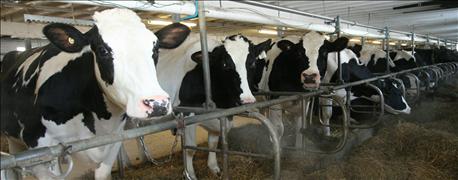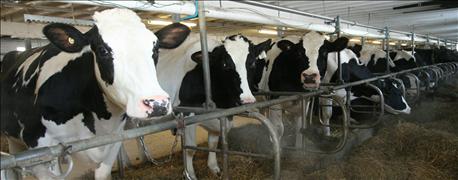November 4, 2016

Digital dermatitis has been in the U.S. for more than two decades. More commonly known as hairy heel warts, digital dermatitis poses a variety of threats to your dairy herd. This disease is caused by a mixture of different bacteria. Anaerobic bacteria are found in the lesions associated with the infection.
No cure
Digital dermatitis is not foot rot; however, both conditions may occur concurrently.

LAME COWS: Digital dermatitis has been affecting dairy cows in the U.S. for more than 20 years.
Digital dermatitis is one cause of dairy cattle lameness. Lameness in dairy cattle has been estimated to cost $90 to $300 per cow. Cost of treatment, decreased fertility, milk yield loss and decreased longevity in the herd are all underlying expenses of lameness, not to mention the labor costs associated with treatment.
Prevalence of digital dermatitis in dairy herds varies depending on herd management. Detection of the condition is a key factor to managing it. Once a cow has digital dermatitis, she cannot be cured, only managed. Risk factors for digital dermatitis are poor hygiene, biosecurity and environment. Animals at an increased risk are nutritionally deficient, such as young cattle and fresh cows. In addition, animals with foot injury and/or skin trauma around the hoof caused by chemical or physical injury are at a higher risk of being infected.
.jpg?width=600&auto=webp&quality=80&disable=upscale)
HEALTHY HOOF: This dairy cow's hoof is healthy.
Prevention is key
Preventing digital dermatitis from spreading in a herd can be managed through footbath use. It is recommended that open lesions be detected and topically treated before sending the cow through a footbath. Consult your veterinarian about topical treatment options. Effectiveness of footbaths in preventing infectious lesions is dependent upon a number of factors, including footbath solution, frequency of changing solutions, footbath dimensions, footbath placement and animal hygiene.
Dr. Dorte Dopfer from the University of Wisconsin-Madison School of Veterinary Medicine stresses that a one-size-fits-all footbath protocol does not exist. You need to bring down the prevalence of disease in the herd to a manageable state.
Footbath solution should be managed closely for maximum effectiveness. The solution should be maintained at 3.5 to 5.5 pH. Making the solution too acidic or too alkaline will not improve digital dermatitis management results. Skin has a normal pH of 4 to 5.5; therefore, maintaining pH at normal skin levels will help maintain healthy skin condition and improve treatment results.
Footbaths should be a minimum of 10 feet long so each cow steps in the bath twice with each hoof. Solution depth should be maintained at a minimum of 4 inches so dewclaws are submerged as the cow passes though. Replacing or changing the footbath solution is dependent on hoof and leg hygiene of the cows. The solution should be changed after 150 to 350 cows pass though the footbath. If cows have cleaner hooves and legs, the solution can be changed after 300 to 350 cows have passed though the footbath. If cows have dirty hooves and legs, the solution should be changed more frequently.
The UW-Extension Dairy Team has written a series of fact sheets focusing on hoof health. To access these fact sheets, contact your local UW-Extension office, or find them on the Dairy Team website. Click on the Resources tab and then Animal Well-Being & Herd Health .
Bjurstrom is the Kewaunee County Extension agriculture agent.

ACTIVE LESION: This is an active, proliferative lesion on this cow's hoof.

CHRONIC LESION: This is an inactive, chronic, hyperkeratotic lesion on a cow's hoof.
You May Also Like




